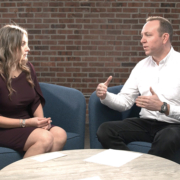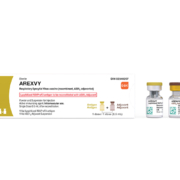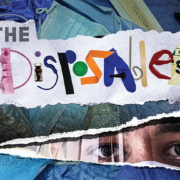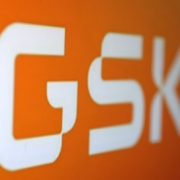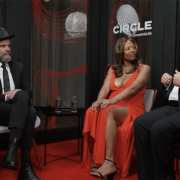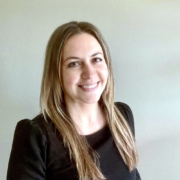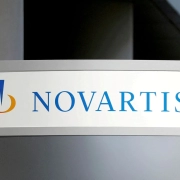Specialty generic drugs and biosimilars fuel Dr. Reddy’s Laboratories growth prospects
Specialty generic drugs and biosimilars fuel Dr. Reddy’s Laboratories growth prospects
An interview with Dinakaran Balasubramanian, head commercial strategy & insights, biologics, Dr. Reddy’s Laboratories,
What are your responsibilities with Dr. Reddy’s Laboratories?
Dinakaran Balasubramanian: One of my primary responsibilities is developing commercialization strategy for biologics and being a thought partner for both the brand team and the market access team involved in launching biosimilars. I’m involved in developing forecasts for internal products and analyzing any licensing or acquisition opportunities which come to our table. I also closely monitor the Biologics/Biosimilar trends in an evolving and highly dynamic landscape.
Our team is very involved in the early stages of our go to market model and framing our overall launch strategy.
How long have you worked at Dr. Reddy’s Laboratories?
Balasubramanian: I’m in my seventh year, as I joined the company in 2017. I started out in the active pharmaceutical ingredients (API) business and was based in India as head of India and Southeast Asia markets for sales and marketing. Although that was my role in India, it’s a little misleading because my market focus was always regulated markets – the United States and Europe, and that’s how I got used to the regulatory, IP, and whole product landscape in the United States. I added on Southeast Asia as an additional responsibility over time, which included Malaysia, Indonesia, Thailand, and the Philippines.
About three and a half years ago, I made a switch into the formulations business, into North America Generics and led strategy for the business. We were traditionally operating in the retail generics, institutional generics, and the OTC store brands space. My role was to come up with a strategy review of the business and identify adjacencies where North America could operate. As an outcome of that exercise, there were two identified initiatives: one was biosimilars and the other was branded OTC or self-care/nutritional/dietary supplements.
A lot of things were moving in the background as well as in India with respect to biosimilars in both the U.S. and European markets, commercializing the products ourselves, which led us to where we are today with biosimilars.
From there I moved into the Specialty Injectables business and took up the role of leading product management. I handled about 18 injectable products, which included managing about five to six product launches. These products were spread across small molecule oncology injectables and general injectables.
This laid the foundation for me to understand the overall U.S. healthcare ecosystem. Institutional business is a great window into how hospitals and clinics function, how product moves through the channel, the market structure, different trade considerations, contracts, pricing, and reimbursement. The product launches that I handled helped me understand the marketplace and its nuances thoroughly. This helped tremendously in my understanding of the biosimilar market landscape as it had a few additional layers to what were already doing in the generic injectable space.
When you first started working with Dr. Reddy’s did you think you would end up working in the United States?
Balasubramanian: Yes and no, because the answer lies in what I did prior to joining Dr. Reddy’s. In my previous company, I was promoting products and services related to drug serialization for pharmaceutical companies. I had [learned] a lot about the U.S. market working with companies on DSCSA [Drug Supply Chain Security Act], and I was always on the lookout for opportunities in the United States because I thought that’s where I could build on my market knowledge and my career.
The segment that you handle now is specialty GX and biosimilars. Is that a growing piece of the Dr. Reddy’s business?
Balasubramanian: Absolutely! I think that’s the future of growth. I would say within the generic segment we have been one of the few players that have launched products that have been extremely valuable in the past five to seven years. Specialty generics and biosimilars are very complex and expected to generate a lot of value for the business going forward. The biosimilar space is exploding, simply because of the heavy innovation pipeline in biologic therapies and the expiration of many blockbuster biologic drug patents. [In addition], treatments in biologic drugs are expanding beyond the traditional landscape of oncology and immunology into other therapy areas. Biosimilars are going to be looked at as one of the biggest growth areas for Dr. Reddy’s in the U.S. as well as globally.
In your position at Dr. Reddy’s, what do you feel are the most important skills that you need to handle your responsibilities?
Balasubramanian: I think one of the most important skills to have is a thorough understanding of the U.S. healthcare ecosystem. As a generic company we have been more focused on selling to the channels through wholesalers/retailers. Generic drugs are covered by payors, by default and are fully substitutable at a pharmacy level. This led to the distribution channel being the most important stakeholder. Payor reimbursements and patient out-of-pocket costs were largely out of my purview. However, biosimilars are treated like quasi brands, as they are not fully substitutable. This demands an expanded understanding of the payor-driven healthcare market and key incentives at play for the various stakeholders like payors/providers/patients
You need a good understanding of the patient ecosystem and the site of care where the patient gets the treatment. Both are part of the big picture, and you need a thorough understanding of each. This is one of the biggest requirements for the role which I’m currently in, and for which I’m learning on the go.
How did your way of doing business change during COVID?
Balasubramanian: Let me back up a little to answer that question. Around 2014–2015 there was an inflection point for the industry – prior to that customer consolidation hadn’t happened, so there were a lot more institutions. The market was a little more fragmented, and there was a lot of parity between the buying entities and the selling entities. Post 2014–2015 time frame there has been a huge wave of consolidation and vertical integration among players in the distribution channel. Large buying consortiums formed and began to squeeze generic companies for margins. Increased competition among generic companies further added to the woes. Price became the only lever for negotiations. During COVID supply chains across the globe were disrupted, and pharma was no exception. This exposed the frailties of many manufacturers, which led to buyers evaluating suppliers more holistically and not just relying on price. Factors like consistency of supplies, backward integration, and supply resilience started getting built into the bidding process, which is a good thing. During COVID I would say that price erosion was a little softer because many suppliers were worried about supply consistency. They didn’t want to rock the boat too much. So, if someone was supplying them and they were getting volumes, they didn’t want to punish them and do a price negotiation. For a few dollars here and there, they wouldn’t switch. There was kind of a stability for about two years. I think that effect has kind of worn out now but thrust on supply consistency has remained.
Do biosimilars take longer to get FDA approval?
Balasubramanian: Yes, invariably the development cycles are much longer. This is primarily because of the need for clinical studies for biosimilar approvals. In the case of small molecule generic approval, bioequivalent studies are enough to demonstrate sameness; in the case of biosimilars, clinical studies are required to prove similarity and safety and efficacy profile of biosimilars. That adds to the program development timeline, and the approval pathway becomes longer in terms of once you begin the review process. The preparation time for a submission is much longer in the case of biosimilars.
What would you say is the most challenging and the most rewarding parts of your job?
Balasubramanian: One of the most challenging parts is understanding the changing landscape, especially the biosimilars landscape. To give some background, the first biosimilar in the U.S. was launched somewhere around 2015. That’s not too long ago. So, it’s still early in terms of biosimilars, and it’s still an evolving category. There have been a lot of changes on the policy front, changing legislation, and the FDA regulatory point of view is constantly changing.
Another challenge is keeping up with the changing trends, reflecting on those trends, and projecting what will happen in the future and how you should be prepared. It’s the most challenging part, and I think the most rewarding part, because you have to be on your toes with respect to understanding what’s changing in the marketplace.
For example, what if the UK came up with a guideline saying that you don’t need Phase III trials anymore? You do a Phase I trial, [demonstrate] your biosimilarity, and then you apply for registration. That’s a landmark shift because it would be one of the first regulated markets to have made that change. If that change were to come to the U.S., suddenly you’re talking about the cost of development going down drastically. And if that happened, the market would become even more competitive. The repercussions that it could have in the U.S. market would be very interesting to watch. So, these are the kinds of challenges that I love [to be involved with], and these challenges are more rewarding because you’re staying ahead of the market, and you can also add value.


